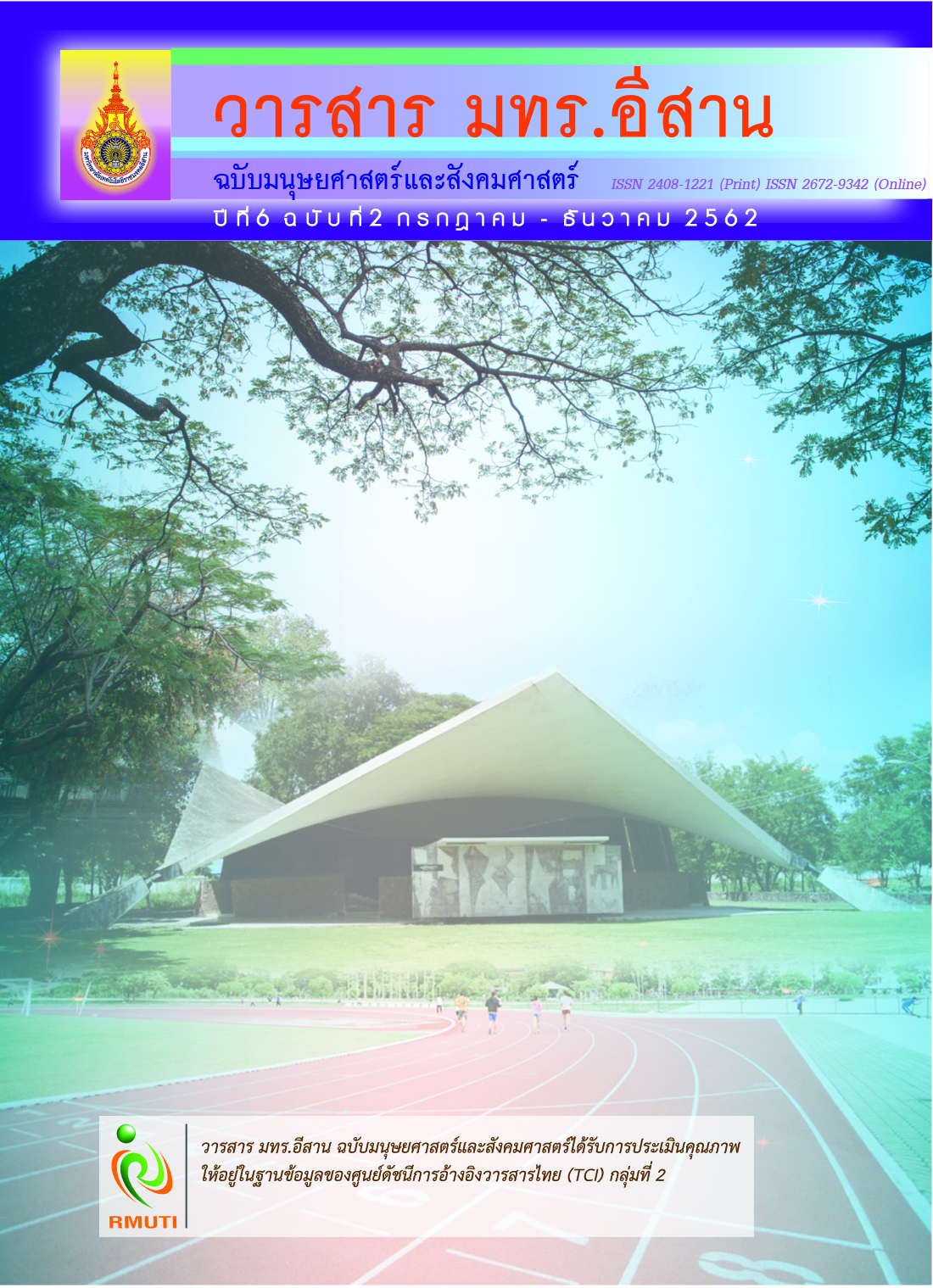Direct and Indirect Effects of New Marketing Mix on Satisfaction by Using Online Shopping Application
Main Article Content
Abstract
The objective of this research was to study the influences both direct and indirect effects of new marketing mix on satisfaction by using online shopping application. The sample size was 300 peoples who were generally online shopping application users. They were selected by using the Purposive Sampling Method. Moreover, the data was analyzed by using Structural Equation Modeling. The results of this research show that the model was consistent with the empirical data, which would follow New Marketing Mix had a positive effect directly on satisfaction of application users through Brand Awareness both direct and indirect ways. Then the developers should to focus on give a good experience, exchange, everyplace, and evangelism appropriately. Also, they needed to create more Brand Awareness in order to let the consumers recognize the application, which would lead to more user’s satisfaction.
Article Details
บทความที่ได้รับการตีพิมพ์เป็นลิขสิทธิ์ของมหาวิทยาลัยเทคโนโลยีราชมงคลอีสาน
ข้อความที่ปรากฏในบทความแต่ละเรื่องในวารสารวิชาการเล่มนี้เป็นความคิดเห็นส่วนตัวของผู้เขียนแต่ละท่านไม่เกี่ยวข้องกับมหาวิทยาลัยเทคโนโลยีราชมงคลอีสานและคณาจารย์ท่านอื่นๆในมหาวิทยาลัยฯ แต่อย่างใด ความรับผิดชอบองค์ประกอบทั้งหมดของบทความแต่ละเรื่องเป็นของผู้เขียนแต่ละท่าน หากมีความผิดพลาดใดๆ ผู้เขียนแต่ละท่านจะรับผิดชอบบทความของตนเองแต่ผู้เดียว
References
ชุติมณฑน์ เช้าเจริญ. (2559). ปัจจัยที่ส่งผลต่อความพึงพอใจในการใช้บริการธนาคารไทยพาณิชย์ จำกัด (มหาชน). วิทยานิพนธ์บริหารธุรกิจมหาบัณฑิต สาขาบัญชี คณะพาณิชยศาสตร์และการบัญชี มหาวิทยาลัยธรรมศาสตร์
ประสพชัย พสุนนท์. (2558). ความเที่ยงตรงของแบบสอบถามสำหรับงานวิจัยทางสังคมศาสตร์. วารสารสังคมศาสตร์
มหาวิทยาลัยศรีนครินทรวิโรฒ. ปีที่ 18, หน้า 375-396
พรทิพย์ วิวิธนาภรณ์. (2557). ปัจจัยทางด้านส่วนประสมทางการตลาดที่มีอิทธิต่อความภักดีต่อตราสินค้าและพฤติกรรมการซื้อผลิตภัณฑ์โลชั่นบำรุงผิวกายยี่ห้อยูเซอรินในโรงพยาบาลเอกชน เขตกรุงเทพมหานคร. สารนิพนธ์บริหารธุรกิจมหาบัณฑิต สาขาวิชาการตลาด คณะสังคมศาสตร์ มหาวิทยาลัยศรีนครินทรวิโรฒ
วีรภัทร ธูปพนม. (2558). ปัจจัยที่มีผลต่อความพึงพอใจของผู้บริโภคในการซื้อสินค้าผ่านเว็บไซต์อีเบย์. วิทยานิพนธ์บริหารธุรกิจมหาบัณฑิต สาขาบัญชี คณะพาณิชยศาสตร์และการบัญชี มหาวิทยาลัยธรรมศาสตร์
สิน พันธุ์พินิจ. (2549). เทคนิคการวิจัยทางสังคมศาสตร์. (พิมพ์ครั้งที่ 2). กรุงเทพฯ : วิทยพัฒน์
อิทธิวัฒน์ รัตนพองบู่. (2555). การตลาดอิเล็กทรอนิกส์. กรุงเทพฯ : วิตตี้กรุ๊ป
Aaker, D. A. (1991). Managing Brand Equity : Capitalizing on the Value of a Brand Name. New York, N.Y : The Free Press
Festa, G., Cuomo, M. T., Metallo, G., and Festa, A. (2015). The (r)evolution of Wine Marketing Mix: From the 4Ps to the 4Es. Journal of Business Research. Vol. 60, pp. 1550-1555. DOI: 10.1016/j.jbusres.2015.10.015
Field, A. (2009). Discovering Statistics Using SPSS (3rd ed.). London : Sage
Hair, J. F., Black, W. C., Babin, B. J., and Anderson, R. E. (2010). Multivariate Data Analysis: A Global Perspective (7th ed.). Upper Saddle River, N J : Pearson
Keller, K. L. (1993). Conceptualizing, Measuring & Managing Customer-Based Brand Equity. Journal of Marketing. Vol. 57, No. 1, pp. 1-22
Kline, R. B. (2016). Principles and Practice of Structural Equation Modeling (4th ed.). New York : The Guilford Press
Krishnan, A. R. and Hari, K. (2011). Factors Determining Customer Satisfaction in Consumer Durable White Goods: Factor Analysis Approach. Asia Pacifi c Journal of Research in Business Management. Vol. 2, Issue 6, pp. 32-46
Pappu, R. and Quester, P. (2006). Does Customer Satisfaction Lead to Improved Brand Equity? An empirical Examination of Two Categories of Retail Brands. Journal of Product & Brand Management. Vol. 15, No. 1, pp. 4-14. DOI: 10.1108/10610420610650837
Vyas, H. D. (2011). Consumer Purchase of Consumer Durables: A Factorial Study. Journal of Marketing & Communication. Vol. 7, No. 2, pp. 38-43
Yoo, B., Donthu, N., and Lee, S. (2000). An Examination of Selected Marketing Mix Elements and Brand Equity. Journal of the Academy of Marketing Science. Vol. 28, No. 2, pp. 195-211. DOI: 10.1177/0092070300282002


